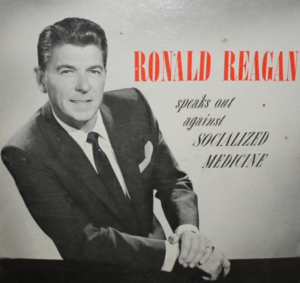 Democratic presidential candidates are lining up in support of Medicare-for-All, and I’m glad they’re making that case to Americans. Around the world, single payer systems like Medicare-for-All are delivering better and cheaper health care than Americans are getting, and we need to adopt such a system as soon as possible. As William Hsiao, Ph.D., professor of economics at the Harvard School of Public Health puts it:
Democratic presidential candidates are lining up in support of Medicare-for-All, and I’m glad they’re making that case to Americans. Around the world, single payer systems like Medicare-for-All are delivering better and cheaper health care than Americans are getting, and we need to adopt such a system as soon as possible. As William Hsiao, Ph.D., professor of economics at the Harvard School of Public Health puts it:
“You can have universal coverage and good quality health care, while still managing to control costs. But you have to have a single-payer system to do it.”
But for reasons I’ll explain below, I don’t believe Medicare-for-All can pass in 2020, even if Democrats control Congress and the White House. So, we need to extend a meaningful bridge to Medicare-for-All.
So what could Democrats pass to make Medicare-for-All possible in the relatively near future?
The 74-Year Battle
 Before we get to that, let’s back up to reflect on how we got here. In 1945, Harry Truman wanted what we today would call Medicare-for-All. For 20 years, it went nowhere. What was dubbed “socialized medicine” by Ronald Reagan and other Republicans just didn’t prove to be politically feasible.
Before we get to that, let’s back up to reflect on how we got here. In 1945, Harry Truman wanted what we today would call Medicare-for-All. For 20 years, it went nowhere. What was dubbed “socialized medicine” by Ronald Reagan and other Republicans just didn’t prove to be politically feasible.
In 1965, Lyndon Johnson had a partial breakthrough. He passed Medicare for 65 and older, but it wasn’t as comprehensive as today’s Medicare. As support for Medicare grew, improvements were made. In 1972, Republican Richard Nixon agreed to expand coverage. In the Reagan years, home health care, hospice services, and a limited prescription drug benefit were added. In the George H.W. Bush era, the prescription drug benefit was expanded.
The historical lesson: Health care reform in a nation dominated by powerful private health insurance companies has been supremely arduous, and therefore incremental. This is true even though Medicare has proven popular and efficient.
Medicare-for-All Next?
Unfortunately, three-quarters of a century after Truman started advocating for Medicare for All, the debate still is treacherous. In 2019, the Medicare expansion debate boils down to essentially this: Should progressives push for 1) publicly financed, mandated Medicare-for-All; 2) voluntary, consumer-financed Medicare buy-in option; or 3) a publicly financed, mandated “Medicare at 50.”
Many progressives, myself included, point to the polls showing strong support for Medicare-for-All, and say now is the time to push for it.
![]()
Indeed, progressives should continue to make the case for making Medicare-for-All the goal. At the same time, we have to recognize that in the current political environment, Medicare-for-All has much less popular support than a Medicare buy-in option. A January 2019 Kaiser Family Foundation (KFF) poll finds that 56% of Americans support Medicare-for-All, while 77% support a Medicare buy-in option. So when conservatives and insurance companies start attacking, the buy-in option would be much more politically bullet-proof than Medicare-for-All.
Moreover, as the debate heats up Medicare-for-All and Medicare-at-50 will be vulnerable to two of the most deadly attacks in all of American politics. First, opponents will say they’re “massively expensive.” Second, they will say consumers would be “forced to give up your current coverage.”
We shouldn’t discount the political power of those two critiques. When it comes to taxpayer expense and mandated change, American voters have historically been very easily spooked. Those two attacks, which would be greatly amplified via hundreds of millions of dollars worth of the most intensive political and special interest propaganda the nation has ever seen, will be very effective at eroding support.
Therefore, today’s poll numbers for Medicare-for-All and Medicare-at-50 will not hold up, and when they shrink, congressional votes will disappear.
Advantages Of A Medicare Buy-In Bridge
A Medicare buy-in option, however, is much more politically durable, and not just because it has 21 points more support in the KFF survey than Medicare-for-All.
Not Expensive. First, a Medicare buy-in option wouldn’t have a big taxpayer price tag like Medicare-for-All or Medicare-at-50, because consumers under age 65 would be paying premiums, not taxpayers.
Not A Mandate. Second, a buy-in option wouldn’t force any consumer to give up their current coverage, which they would need to do with either Medicare-for-All or Medicare-at-50. Under the buy-in option, consumers who want to continue to pay more to keep their private coverage could still choose to do so.
The fact that a Medicare buy-in option is voluntary and self-financing would largely disarm the most potent political attacks that have been working since 1945.
A Bridge To Medicare-for-All. But make no mistake, passing a Medicare buy-in option would constitute dramatic progress that would make Medicare for All much more likely in the future. Let me count the ways:
- More Affordable for Millions. Because Medicare has much lower overhead than private health insurance, it would give millions of Americans more affordable coverage than they have today. By the way, if private insurance somehow turns out to be cheaper and/or better than the Medicare option, as conservatives have long claimed, consumers obviously will choose it. If that happens, Republicans will be proven correct. So let patients decide, not politicians. Conservatives should have nothing to fear from giving this option to consumers.
- Aid Cost Control. A Medicare buy-in option would give Medicare a bigger pool of consumers, which would give Medicare officials much more leverage to negotiate cost control with hospitals, doctors, device makers and pharmaceutical companies. “Medicare-for-more” would not be as effective at leveraging lower costs as “Medicare-for-All” will be, but it will bring important progress.
- Deepen Medicare Support. As more Americans voluntarily switch from private insurance to the cheaper Medicare buy-in option without experiencing worse service and coverage, it will show Americans that this “government-run health care” is not the horrific bogeyman Republicans have made it out to be.
- Broaden Generational Support. Finally, while Medicare currently mostly only has senior citizen champions, newly converted believers in Medicare would be in their 20s, 30s, 40s, 50s, and early 60s. This would dramatically strengthen the Medicare-for-All base of support.
So, a Medicare buy-in option would be much more politically feasible than Medicare-for-All or Medicare-at-50, and it is the next logical span of the bridge to Medicare-for-All to add. Progressives shouldn’t be hesitant to build it.

The incremental approach makes a world of sense to me, much as I would prefer what can no longer ever be called instant gratification on this issue.
Can you help me understand the following in your article (cut/pasted):
“At the same time, we have to recognize that in the current political environment, Medicare-for-All has much less popular support than Medicare-for-All.”
Thanks.
Yes, I can help you understand that sentence. The author is a moron. I just corrected that sentence. Sorry!
Yeah, I saw that sentence too. Guess that means we are actually reading and grasping your thoughts. This is good stuff, Joe. Totally agree with your thoughts and progression of this issue. We are just not ready for Medicare for all at this point in time, although I wish we were.
Me too. But if we could pass a Medicare buy-in option, I think we’re only another 10-ish years away from having enough support to get to Medicare-for-All. That sounds like a lot, but when you consider that we started the journey to Medicare-for-All 75 years ago, that puts us in the “home stretch.”
This sounds like the best of the various ideas being floated. Thank you for your detailed analysis. I sort of dread reading about this stuff but your piece is very good.
Appreciate that Ruth. I sort of dread writing it too! Both the policies and the politics surrounding health care are ridiculously complicated, thanks to America’s chaotic Rube Goldberg-like system of public and private health insurance.
Appreciate that Ruth. I sort of dread writing it too! Both the policies and the politics surrounding health care are ridiculously complicated, thanks to America’s chaotic Rube Goldberg-like system of public and private health insurance.